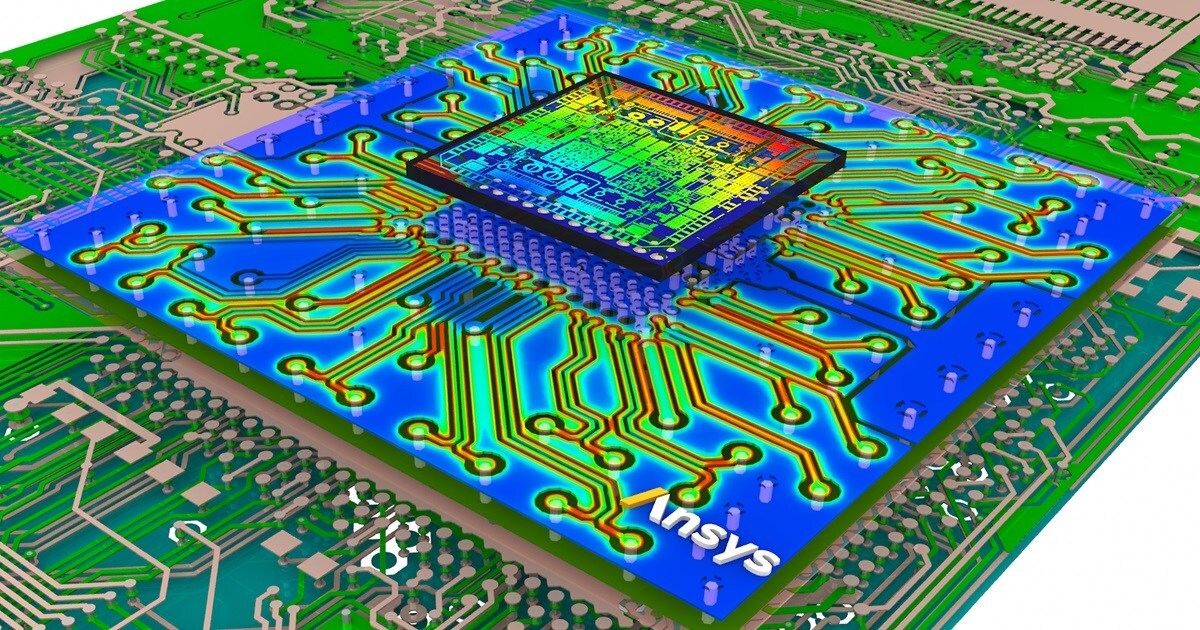PRESS RELEASE – Ansys (NASDAQ: ANSS) 2024 R2 redefines the boundaries of product design by enabling customers to move beyond the limits of single-physics simulation to gain multidimensional insight into the performance of today’s complex products. R2 enhancements focused on accelerating run times, scaling capacity, enabling digital transformation, and providing hardware flexibility are making Ansys multiphysics simulations more accessible and powerful than ever before.
“Ansys 2024 R2 makes our portfolio deeper, broader, smarter, and more connected than it’s ever been,” said Shane Emswiler, senior vice president of products at Ansys. “Customers rely on Ansys software that spans the entire range of physics and domains, from systems simulation to digital twins. We look forward to the truly transformational innovations our customers will engineer with Ansys’ pervasive simulation insights and the expertise of the Ansys Customer Excellence support team.”
Customers across industries will realize gains in productivity and collaboration through R2’s enhancements to connected workflows across the Ansys portfolio.

“We are established users of Ansys enterprise tools and rely on the predictive accuracy, speed, and flexibility that its solutions like Ansys Discovery™ design tool provide,” said Dr. Jon Powell, technical specialist simulations at Malvern Panalytical. “The same workflow can start in one engineering department and get passed to another without losing fidelity, all while saving huge amounts of time and effort.”
Complex Problems Require Comprehensive Solutions
Ansys 2024 R2 streamlines multiphysics workflows, simplifying the process of connecting multiple, disparate software technologies across domains. The new release makes it easier for users to comprehensively evaluate cost and performance throughout a product’s life cycle, from the most complex chips to electric vehicle powertrains.
Advanced packaging techniques for next-generation IC designs promise significant performance gains but increase design complexity. The new Ansys HFSS-IC solver addresses the growing complexity of today’s advanced chip designs. Integrating Ansys’ leading electronic and semiconductor technologies, the new HFSS-IC solver excels at deep electromagnetic analysis for IC signoff across power and signal integrity analysis — ensuring the final iteration delivers the performance demanded by next-generation electronic devices.
Increasingly complex multiphysics design challenges are permeating nearly every industry, including automotive. As companies seek to mature electric vehicle (EV) technology, optimizing noise, vibration, and harshness (NVH) in EV motors is crucial to vehicle performance and safety. Enhancements to Ansys Mechanical™ structural simulation software for e-powertrain workflows boost overall productivity of NVH analyses by delivering more accurate test correlation, acoustics simulation, and speed improvements.
This release also includes seamless data transfer between the Ansys Zemax® optical system design software and the Ansys Speos® optical performance analysis solver to more efficiently evaluate and optimize optical designs — including large systems with complex fields and wavelengths. For example, the integration unlocks streamlined straylight analysis for optical systems to help users eliminate unwanted effects caused by lens flare, light leakage, and scattering in optical systems.
From Chips to Missions to Deployment: Ansys AI Enhances Solutions Across Domains
Ansys continues to deliver new use cases for AI, adding the Ansys TwinAI software to its portfolio. TwinAI software seamlessly combines insights from real-world data, powered by cutting-edge AI techniques, with the accuracy of multidomain models. This release also includes improvements to enable scaled deployments to the cloud or edge, allowing customers to unlock additional insights from real-world data.
“Innovation fuels progress, and at Tata Steel Nederland, we’re pioneering a transformative journey towards sustainability,” said Paul van Beurden, knowledge group leader – R&D, Tata Steel Nederland. “By harnessing the power of Ansys TwinAI software, we’re optimizing our production processes, minimizing energy loss, and driving towards our decarbonization reduction targets of 30-40% by 2030 and being carbon neutral by 2045. Ansys technology is instrumental in getting us there.”
The Ansys Missions AI + tool is a new technology that delivers algorithms focused on enhancing Ansys Digital Mission Engineering (DME) products. Engineers can automatically evaluate the quality of resulting orbit solutions with tuned models to provide expert-level analysis and enhanced safety of flight routines. Infusing AI into Ansys DME solutions allows users of varying simulation expertise to access and deploy the technology with ease.
Ansys AI integrations are also creating design efficiencies for nanometer-scale semiconductor applications. Ansys RaptorX™ electromagnetic modeling software now includes an AI-driven IC floorplan optimization solution, which identifies the ideal layout for mitigating electromagnetic coupling issues in analog and RF IC designs. By combining the power of the RaptorX solver with AI, users can reduce circuit footprint and shrink design time from weeks to days.
Ansys Hardware Partners and Open Ecosystem Deliver Blistering Simulation Speed
Ansys technology in 2024 R2 facilitates highly scalable high-performance computing (HPC) deployment, with all solver technologies optimized to run on central processing units (CPUs) and a growing list of solutions optimized for the latest graphics processing unit (GPU) hardware from multiple vendors. This list includes the Ansys AVxcelerate Sensors™ software for autonomous system testing, which now features adaptive grid sampling for long range object detection. Adaptive grid sampling allows simulation users to narrow their focus on specific objects within a virtual driving scenario to gather more targeted data. When compared to global sampling, which gathers all data from a driving scenario resulting in oversampling, the AVxcelerate Sensors enhancement delivers 3x faster simulation and 6.8x less GPU memory consumption with the same or better level of object detection and predictive accuracy.
Ansys Fluent® fluid simulation software boasts new hardware compatibility with AMD GPUs, supporting a broader selection of hardware options. Users working on acoustics, reacting flows, or subsonic/transonic compressible flows can now leverage the multi-GPU solver to run their simulations at exponentially faster speeds with the expansion of physics modeling capabilities. Embedded integration of Ansys optiSLang® process integration and design optimization software supports further exploration of design options through built-in parametric optimization.













